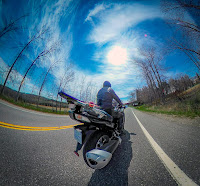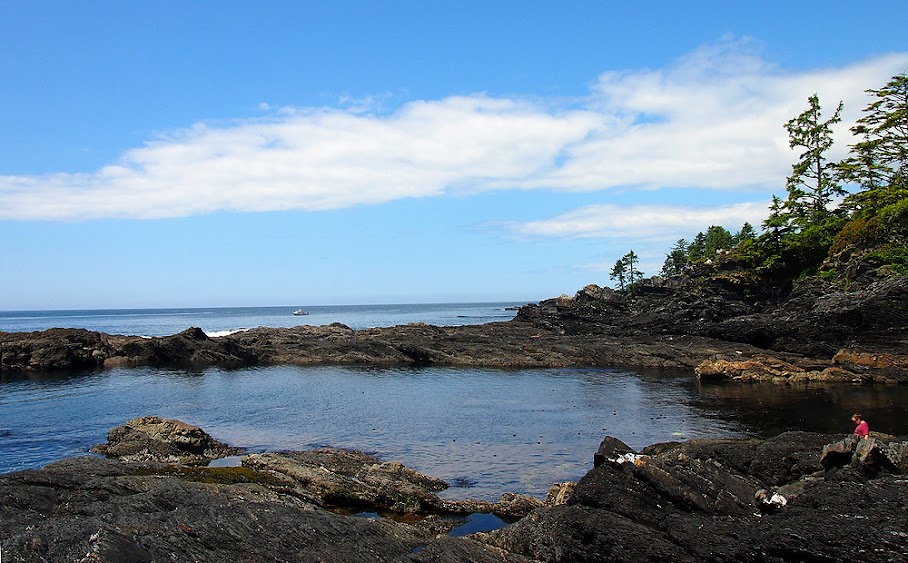I've got a work thing in Vancouver next month which got me thinking about incorporating a ride to the west coast and back. Turns out flying is much cheaper (even with car rental) than riding...
Cost of flying/ ($200 return) + renting a car for the week (inc. gas + taxes = $1100): ~$1300 total.
Total mileage riding out and back: ~8800kms. at 0.58 cents/kms = ~$5100 (not counting hotels enroute). Flying is way cheaper! I'd save on having to rent a car while out there, but the costs of moving myself there (as opposed to being luggage on a plane) are significant.
If I took the week off before the week I needed to be in Vancouver, could I ride out there in that time? It's about 4400kms to get there. Saturday to the following Sunday is nine days on the road, which works out to under 500kms/day. Intense but certainly doable.
4400kms out at 500kms/day = 9 days (8 nights of hotel). Going cross-Canada on the way out: https://goo.gl/maps/zBYBMzkMqsxDrMx67 = 4436kms. 9 days on the road at 500kms per day = 4500kms.
After the week on the ground in Vancouver, I'd take 2 weeks off to come back through the States, hitting key points like Yellowstone National Park. The way back through the US, even with the detour down to Yellowstone, is 4462kms: https://goo.gl/maps/RHEUUiSrxCCj6V7g7
It would probably be wise to factor in a tire change at some point on this 10k odyssey. I imagine they're cheaper and easier to find in the States, so I'd throw on some new shoes and get an oil change and service once south of the border.
Riding out would chew up 3 weeks of vacation but would offer a chance to cross most of the continent on two wheels. In a perfect world I could find work related stops on the way out across Canada and get that week covered (mileage and hotels), then use 2 weeks of holiday for the return through the US.
Motels in Canada on the way out look to be between $120-150 a night (x 8 nights = $1200 in not fancy housing). If I stayed out of cities (where hotel pricing seems to have lost its mind), I could come in under budget if I was aiming at $150/night (taxes in) on average. Hotel prices in the States look similar.
Budget (assuming I covered all costs)
Hotel stays going out (8 nights @ $150/night avg taxes in) = $1200Hotel stays coming back (12 nights @ $150/night avg taxes in) = $1800
Gas/day = $60* (= 2 tankfulls and ~700kms range/day on the C14) x 20 days on the road = $1200
Tires & Service: Bellevue Kawasaki in Seattle on the way back $1000
Travel eating: breakfast**: $10, Lunch: $20, Dinner: $30 = $60/day avg. x 20 days = $1200
Estimated total cost for a 3 week cross continent 2-wheeled odyssey: $6400
* Well over what I'd need/day mileage wise and will be cheaper in the US** If I'm staying a breakfast included hotel then I can save there
That budget isn't being overly stingy and I should be able to come in ahead on it. It might also be possible to shave days off if I get into a groove (say, on the Praries) and do a couple of big mileage highway days. If I got good at a last minute booking app like HotelTonight I could probably save a bit on the hotel stays too. Another alternative might be to stay at the same chain all the way across and save that way.
We did it by car preCOVID and it was an epic trip. Riding would make it even better!






















































